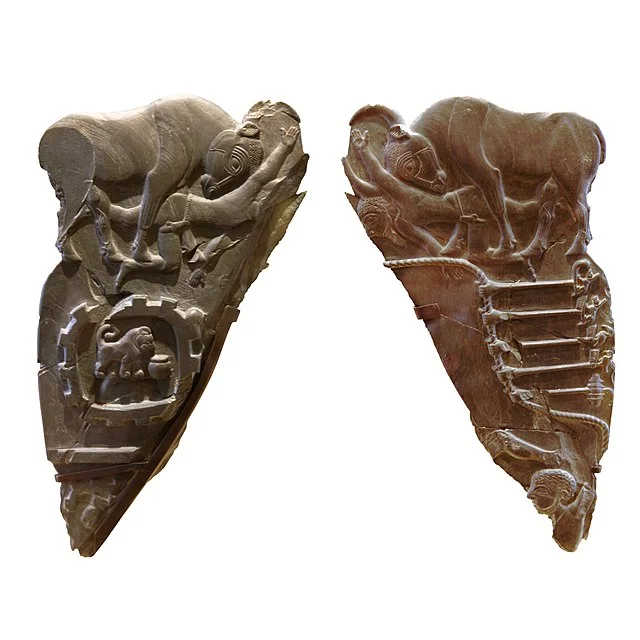The Bull Palette is an important artifact from ancient Egypt, dating to the late Predynastic Period, around 3200 BC. It is one of several cosmetic palettes used for grinding and mixing pigments, likely for ceremonial purposes. Scholars have long studied these palettes for insights into early Egyptian art, culture, and religious beliefs.
Get your dose of History via Email
Discovery and Material
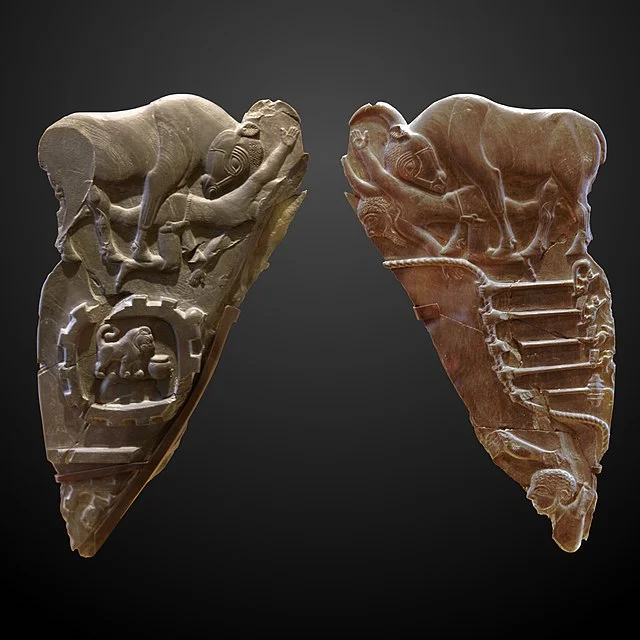
The Bull Palette was discovered in the region of Hierakonpolis, a major site in Upper Egypt during the late Predynastic Period. It is carved from siltstone, a material commonly used for cosmetic palettes during this time. Siltstone was a durable and workable stone, ideal for intricate carvings.
Design and Imagery
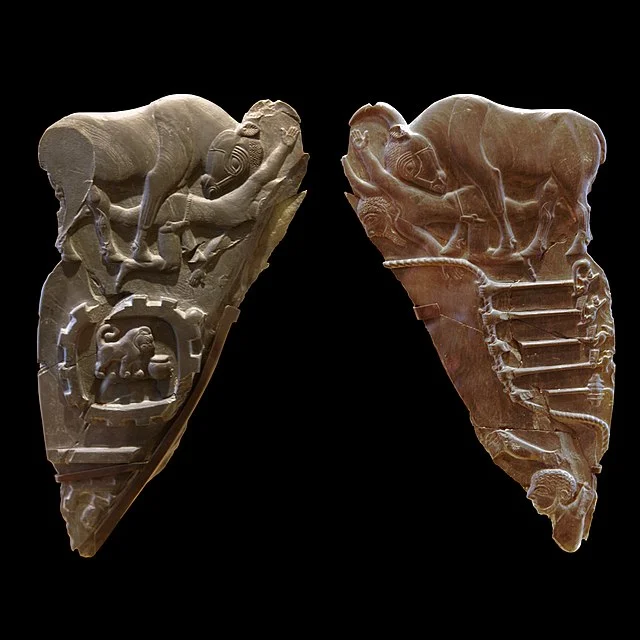
The Bull Palette is characterized by its detailed imagery. It features a central depiction of bulls, an animal symbolically associated with strength and kingship in ancient Egyptian culture. The relief carvings show bulls trampling over enemies, likely symbolizing power and domination. These carvings emphasize the significance of the bull as a protective force and a symbol of royal authority.
The design of the Bull Palette also highlights a transition in Egyptian art, moving towards the detailed representation of figures and scenes that would later define Egyptian visual culture. The palette shows not only artistic skill but also the symbolic use of animals and action to convey political and religious ideas.
Function and Usage
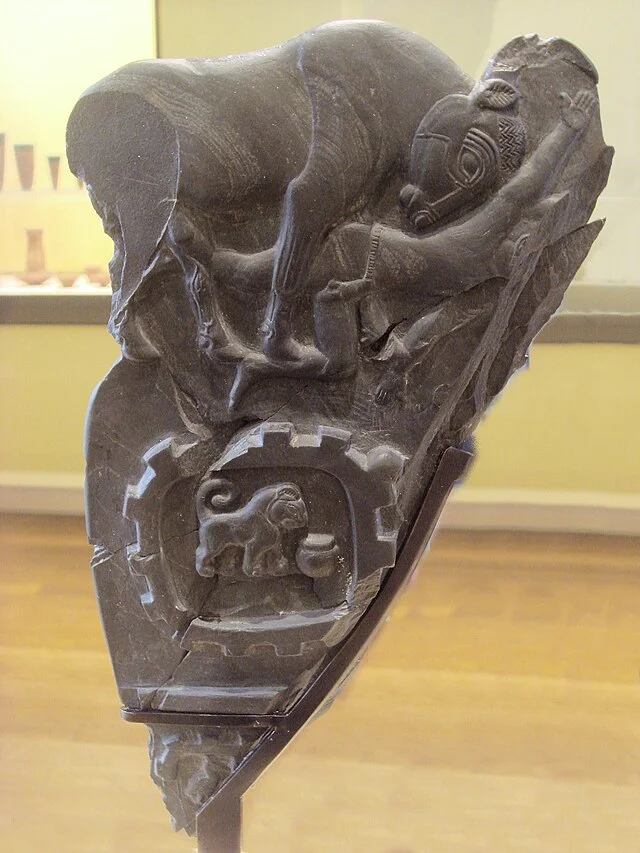
While the Bull Palette may have been used for grinding pigments, its elaborate design suggests it had a more ceremonial role. Palettes like this one were often placed in tombs or temples, possibly to ensure the deceased’s protection or to honor gods. The scenes depicted likely held ritual significance, reinforcing the power and influence of the elite class.
Significance in Egyptian Art
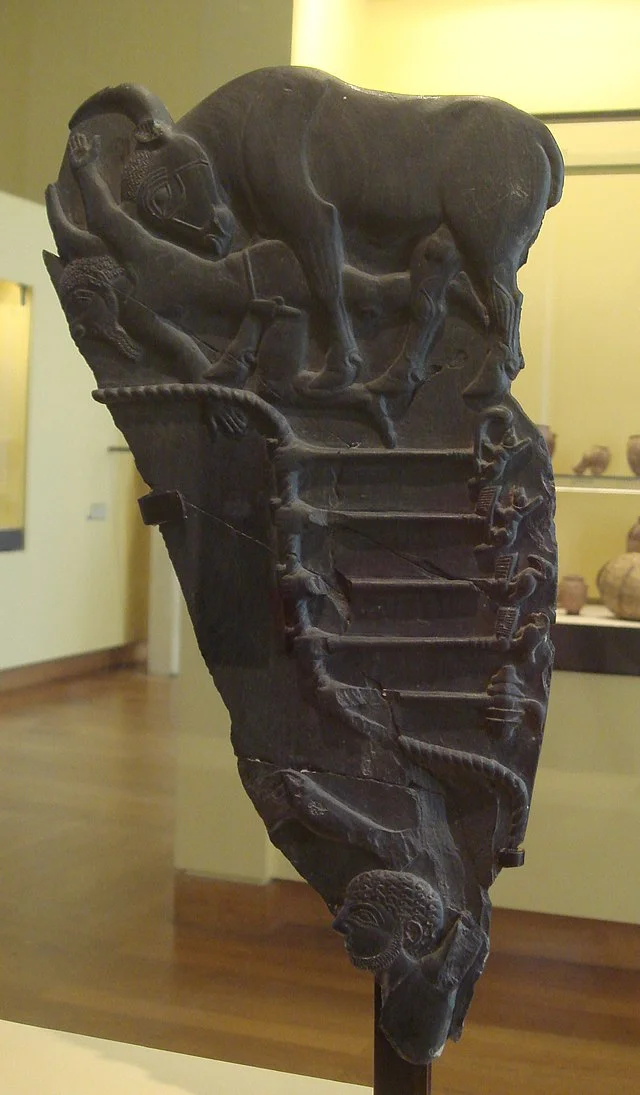
The Bull Palette is an example of early Egyptian efforts to depict power and control through symbolic imagery. It predates the unification of Upper and Lower Egypt, offering a glimpse into the political landscape of this period. As with other palettes, such as the famous Narmer Palette, it marks the development of narrative relief carving in Egypt. The bulls represent more than just animals—they symbolize royal strength and military might, elements central to the rise of pharaonic power.
Conclusion
The Bull Palette is a key artifact for understanding ancient Egyptian culture. Its detailed carvings, ceremonial function, and symbolic imagery make it a significant piece in the study of early Egyptian art and society. This palette provides valuable insights into the beliefs and political structures that shaped Egypt during the late Predynastic Period, laying the groundwork for the dynastic civilization that followed.
Source:

